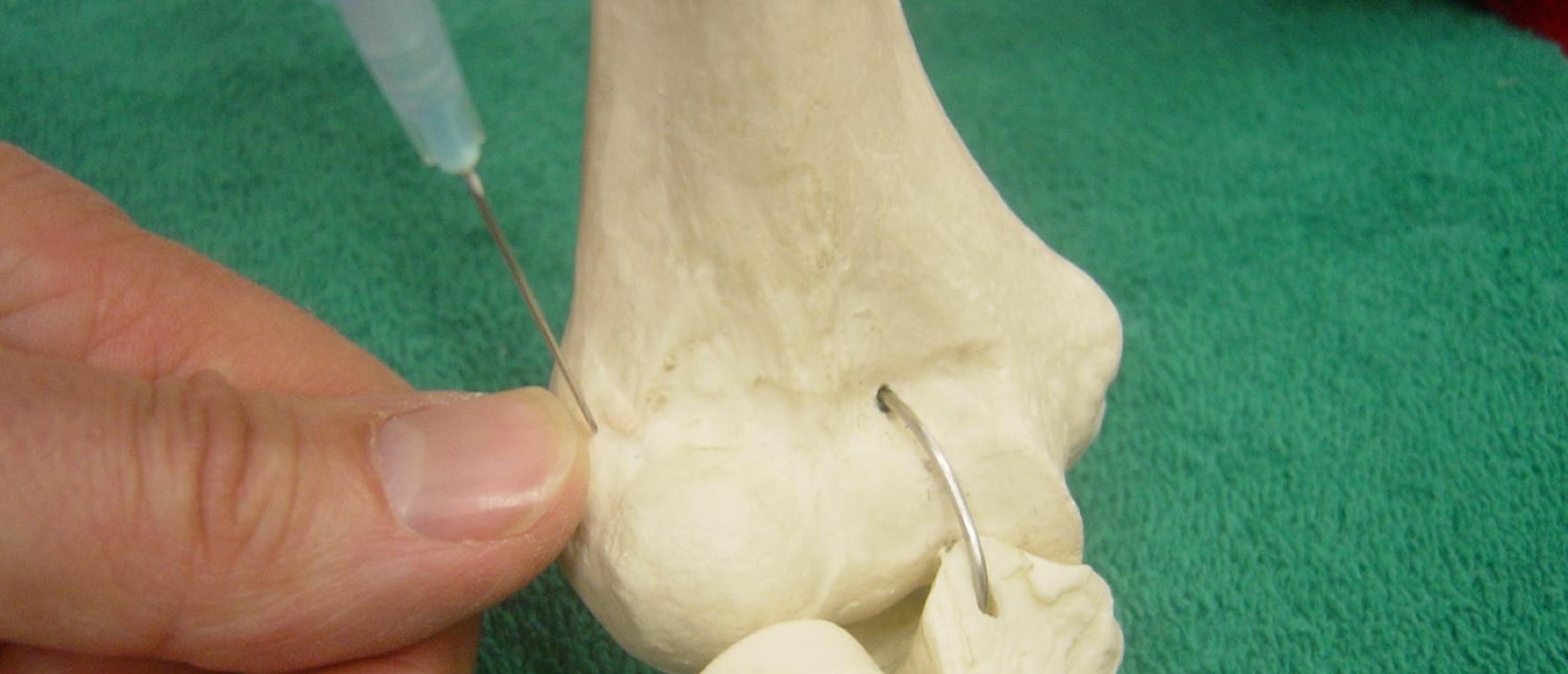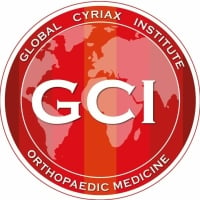
Interesting to know before injecting
Injection techniques, general directives
By Dr. Jan Claeys, M.D.
Injecting a certain structure doesn’t make any sense if there’s no correct and specific diagnosis. Therefore, clinical reasoning is at all times imperative. Before an injection or an infiltration is given, the following questions must be answered…
Infiltration or injection ? A matter of expertise !
Take into account following considerations :
- In what tissue, and in what part of it, does the lesion lie ? Only a precise diagnosis can lead to an optimal result of the therapy.
- What posture should the patient adopt to enable the best and easiest palpation of the lesion ?
- What posture should the patient adopt to enable the best and easiest infiltration or injection of the lesion ?
- In what spot should the needle be inserted, in what direction, how deeply ?
- How long and how thick a needle must be used, and what sort of syringe ? The needle must be long enough to reach the entire lesion. The thinner the needle, the better one can feel what sort of tissue is reached or pierced. The sort of syringe, of course, depends upon the quantity of fluid, the thickness of the needle and the sort of tissue to be treated (tissue resistance).
- What must be the volume of the fluid, in order to reach the entire lesion ?
What fluid should be used ? Some general rules :
- A lesion in a muscle belly can be treated by procaine, whereas other products have no therapeutic value here.
- Lesions at the musculotendinous junction cannot be treated by infiltrations ; the best treatment is deep friction.
- Tenoperiosteal and ligamentoperiosteal junction lesions can either be treated by deep friction or by infiltration of triamcinolone acetonide or prolotherapy.
- Tendinitis, tenosynovitis and tenovaginitis can be treated by deep friction or by peritendinous infiltrations of triamcinolone acetonide or prolotherapy.
- Most cases of arthritis can be treated by injection of triamcinolone acetonide. One exception is Reiter's disease.
- Bursitis can be treated either by triamcinolone acetonide or by procaine, according to its form (acute or chronic).
In an epidural local anaesthetic injection procaine is used ; if the result is insufficient, triamcinolone acetonide can be added.
Nerve compression phenomena (median or ulnar nerve, compression of the nerve roots L2-L5, S1 by an irreducible disc protrusion) can be treated by an infiltration of triamcinolone acetonide about the nerves.
What must be the strength of the solution ?
It goes without saying that an injection or an infiltration can only be given after careful disinfection of the skin. The site of puncture and its surroundings are best disinfected with a 10 % polyvidon iodine solution, making a circular movement from the centre towards the periphery. Time of contact : 35-45 seconds.
In case of iodine allergy, a 70 % isopropanol solution is used. Time of contact : at least 12 seconds.
After the local disinfection, the site of puncture is not touched any more. Therefore it is essential, before the disinfection, to mark with a dermographic pencil the site of puncture and the possible anatomical points of reference in the vicinity.
After the disinfection the needle, syringe and fluid are collected in the most sterile manner.
After the injection or infiltration the site of puncture is disinfected with a 70 % isopropanol solution and covered with a sterile plaster.
